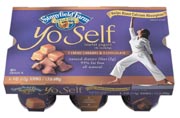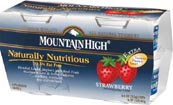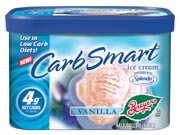
Regardless of the dietary delivery vehicle, fiber plays an important role in human health. For starters, non-fermentable fiber, such as wheat bran, is well known for its laxation effect; however, research indicates fibers that are fermentable give benefits that are even greater. Fermentable fiber resists digestion and absorption in the small intestine, with complete or partial fermentation taking place in the large intestine. This action has been strongly associated with reducing the risk of colon cancer. Epidemiological studies have shown that diets low in saturated fat and cholesterol and high in fiber help reduce the risk of certain cancers, diabetes, digestive disorders and heart disease. We now understand that a variety of fibers are an important part of the mix.
In most countries, sufficient levels of fiber are consumed through the regular diet. Unfortunately, Americans, in general, do not eat enough of the "right" foods (whole grains, fruits and vegetables) to consume adequate amounts of fiber, naturally. This is why fortification has become quite common.
A little more than a year ago, the U.S. National Academy of Science established the first Dietary Reference Intakes for dietary fiber. For adult females, it is 25 grams per day, while for males it is higher-38 grams per day. Unfortunately, median intakes in the United States are about half of this for each gender. This gap represents a significant opportunity for food and beverage manufacturers to boost fiber contents.
Food and beverage manufacturers have traditionally struggled to boost fiber levels to noteworthy levels, as available fiber-enriching ingredients were quite limited and not very palatable. Fortification of dairy foods, products inherently creamy and smooth, was particularly challenging. In fact, until a few years ago, it was unheard of to add fiber to dairy foods. However, today, a number of suppliers offer fiber ingredients that can be added undetectably to dairy foods. Such fiber ingredients are odorless, flavorless and inert.
Dietary fiber ingredients are typically sourced from a variety of plant-derived compounds, and are composed of materials categorized as insoluble or soluble. Dietary fiber ingredients described as insoluble often contain cellulose, hemicellulose, lignin or resistant starch; whereas many soluble fiber ingredients contain fructooligosaccharide (FOS), gum, inulin, pectin, polydextrose or resistant maltodextrin.
Insoluble fiber is associated with reducing the risk of digestive disorders, as well as certain cancers. With cancer, the exact mechanism is unknown, but scientists theorize that insoluble fiber adds bulk to stool, which in turn dilutes carcinogens and speeds transit through the lower intestines and out of the body. This same process of bulking stool hastens passage of fecal material through the gut, thus helping to prevent or alleviate constipation, the laxation effect mentioned earlier. Soluble fibers that are fermentable confer the same benefits, but they do so through probiotic bacteria support in the intestine and are thought to be gentler on the digestive system.
Only a few insoluble dietary fibers are adapted for use in dairy foods, where flavor, color, body and texture are quite subtle. Traditionally, insoluble fiber ingredients have been used in the grain-based foods industry, where they are more compatible with the sensory characteristics of breads, cereals and muffins.
Dairy manufacturers wanting to add fiber to formulations appear to be pursuing soluble fiber ingredients. Soluble fibers that are viscous have been shown to trap dietary cholesterol and bile acids as they pass through the gastrointestinal tract, thus helping the body eliminate cholesterol and reduce blood cholesterol levels. This reduces the risk of heart disease.
Similar to how viscous soluble fiber traps cholesterol, it has also been shown to trap carbohydrates, slowing their digestion and absorption. This may help prevent wide swings in blood sugar level during the day, as well as have an impact on the development of adult-onset diabetes.
Some soluble fibers have also been shown to boost calcium absorption and act as prebiotics to promote the growth of beneficial intestinal bacteria (probiotics). This renders these soluble fibers as a natural addition to cultured dairy products, where calcium is inherently present and formulations often contain probiotic cultures.

Defining fiber
Indeed, dairy foods manufacturers have a variety of fiber ingredients from which to choose. Selection is typically made by application, product shelflife, final composition specifications and desired health benefit. The problem with fiber ingredients lies in the fact that there is disagreement within the scientific, regulatory and ingredient communities as to what actually is fiber.Does a single official definition for fiber exist? No, and no one should hold their breath for one. The term fiber continues to be one of the most disputed terms in the food industry, as chemists classify fiber on an analytical basis and nutritionists prefer a physiological definition.
In 1999, the American Association of Cereal Chemists (AACC) determined that "Dietary fiber is the edible parts of plants or analogous carbohydrates that are resistant to digestion and absorption in the human small intestine with complete or partial fermentation in the large intestine. Dietary fiber includes polysaccharides, oligosaccharides, lignin and associated plant substances. Dietary fibers promote beneficial physiological effects including laxation, and/or blood cholesterol attenuation, and/or blood glucose attenuation."
About a year ago, the Food and Nutrition Board of the Institute of Medicine (FNB) issued its definition of fiber, one that AACC opposes, saying that it causes confusion and has no scientific basis. This is because FNB's definition separates dietary fiber into two components: dietary and functional. AACC says, "All dietary fiber is fundamentally functional."
FNB's definition reads: "Dietary fiber consists of nondigestible carbohydrates and lignin that are intrinsic and intact in plants. Functional fiber consists of isolated, nondigestible carbohydrates that have beneficial physiological effects in humans. Total fiber is the sum of dietary fiber and functional fiber."
Regardless of the definition, to list dietary fiber on a Nutrition Facts panel, the product must be tested by an approved dietary fiber quantification method, per FDA. Some tests are able to quantify soluble fibers such as inulin, fructooligosaccharide, polydextrose and resistant starch, while others are not.
Stonyfield Farm, Londonderry, N.H., includes inulin in its yogurt and drinkable yogurt formulations. Using an approved testing method, a 4-oz serving of YoSelf™ yogurt has been determined to contain 2g of dietary fiber.

Breyers® Carb Smart™ ice cream from Good Humor-Breyers, Green Bay, Wis., contains polydextrose along with various cellulose and gum ingredients. A half-cup serving contains 3g dietary fiber, and a mere 4g "net carbs."
Breyers Carb Smart is one of a growing number of products to appeal to low-carbohydrate dieters. Product labels state "net carbs," which is total carbohydrates less dietary fibers and sugar alcohols.
The term net carb, though not legally defined, just like fiber, takes into account glycemic index. Glycemic index is a ranking of carbohydrates on a scale from 0 to 100, depending on how much the carbohydrate raises blood sugar levels after eating. Foods with a high-glycemic index are rapidly digested and absorbed and result in big fluctuations in blood sugar levels. But foods with a low-glycemic index, by virtue of their slow digestion and absorption, such as fiber ingredients, produce gradual rises in blood sugar and insulin levels. Thus net carbs refers to the total amount of carbohydrates that negatively affect (i.e., increase) blood sugar and insulin. A product with low net carbs has an implied low or lower glycemic index. Low carbohydrate dieters strive for a diet low in high-glycemic index carbohydrates, among other things.
In conclusion, the time is right to supplement dairy foods with fiber ingredients. Work with your suppliers to develop a signature formulation.